Table of Contents
When you visit a hospital or clinic, you might notice a series of forms, codes, and invoices that follow your treatment. Behind this complex process lies an essential function called medical billing process
Medical billing is the bridge between healthcare providers and insurance companies, ensuring doctors are paid for their services and patients’ claims are processed accurately. It’s a crucial part of the healthcare revenue cycle, helping hospitals and clinics maintain financial health while patients get the benefits they deserve.
What Is Medical Billing?
Medical Billing Process is the process of translating healthcare services into billing claims submitted to insurance companies for payment.
It involves collecting patient data, verifying insurance coverage, coding the treatment provided, and following up on unpaid claims. Medical billing specialists ensure that every step is handled correctly to avoid errors, denials, and payment delays.
In short, medical billing transforms healthcare services into financial transactions.
How Does Medical Billing Process Work? Step-by-Step Process
1. Patient Registration
The process begins when a patient schedules an appointment. The billing team collects personal details, insurance information, and medical history. This data ensures smooth communication with insurance providers later.
2. Insurance Verification
Before treatment begins, the billing staff verifies the patient’s insurance coverage, co-payments, and deductibles. This step prevents future claim denials and helps estimate out-of-pocket costs.
3. Medical Coding
After the patient receives treatment, medical coders assign standard codes (ICD-10, CPT, and HCPCS) to each diagnosis and procedure. These codes help translate medical information into a format that insurance systems can understand.
4. Charge Entry
The coder’s work is then reviewed, and the data is entered into the billing software. This includes all charges related to consultations, tests, and procedures performed.
5. Claim Submission
Once all details are verified, the claim is submitted electronically to the insurance company through clearinghouses. This digital submission speeds up the approval process.
6. Adjudication
Insurance companies review the claim to determine how much they will pay based on the patient’s policy. They might approve, deny, or partially pay the claim depending on the coverage.
7. Payment Posting
After adjudication, the insurance company sends payment to the healthcare provider. The billing team then posts the payment and updates the patient’s balance in the system.
8. Patient Billing
If any balance remains (like deductibles or co-pays), the patient receives a bill. This invoice details what the insurance paid and what the patient owes.
9. Follow-Up and Collections
If payments are delayed or denied, billing specialists follow up with insurance companies or patients to resolve issues. In some cases, unpaid accounts may be transferred to collections.

Why Is Medical Billing Important?
Medical billing is more than just paperwork—it’s essential to the healthcare ecosystem. Here’s why:
- Ensures Proper Revenue Flow – Keeps hospitals and clinics financially stable.
- Reduces Claim Denials – Accurate billing minimizes payment delays.
- Improves Patient Satisfaction – Transparent billing builds trust.
- Supports Compliance – Accurate coding and billing prevent legal issues.
- Streamlines Operations – Automating billing improves overall efficiency.
Common Challenges in Medical Billing
Despite technology, billing errors still happen. Some common challenges include:
- Coding Errors – Using incorrect codes can lead to claim rejections.
- Incomplete Documentation – Missing details delay payments.
- Denied Claims – Lack of verification or eligibility issues.
- Delayed Payments – Due to errors or processing delays.
- Changing Regulations – Constant updates in healthcare policies.
Professional medical billing companies help healthcare providers overcome these challenges through expertise, automation, and compliance systems.
Benefits of Outsourcing Medical Billing
Many healthcare providers now partner with medical billing companies to streamline operations. Here’s why outsourcing makes sense:
- Higher Accuracy: Professional billing teams reduce coding and claim errors.
- Better Cash Flow: Faster payments and fewer denials.
- Time-Saving: Lets doctors focus on patient care instead of paperwork.
- Data Security: Ensures patient data is protected under HIPAA standards.
- Scalability: Billing companies can handle large volumes as clinics grow.
Example: A Day in the Life of a Medical Biller
A medical billing specialist starts their day reviewing pending claims, verifying insurance responses, and updating patient accounts. They coordinate with doctors, coders, and insurance representatives—ensuring every detail aligns perfectly for successful claim approval.
Their goal: to make sure no service goes unpaid and every claim is accurate.
The Role of Technology in Medical Billing
Modern medical billing relies heavily on software and AI tools. These systems automate claim submissions, detect errors, and predict denial risks. Technologies like electronic health records (EHR) and AI-based billing platforms have made billing faster, safer, and more transparent.

Medical billing is the heartbeat of the healthcare revenue cycle. It ensures that doctors, hospitals, and clinics get paid for their services while patients receive accurate and transparent bills. medical billing process
Whether handled internally or outsourced to a medical billing company, this process plays a vital role in maintaining smooth financial operations in the healthcare industry. medical billing process




